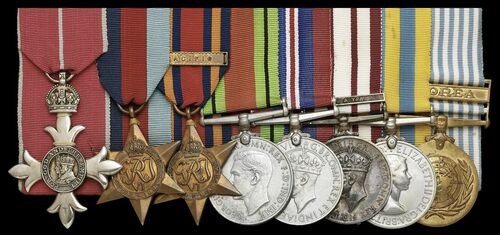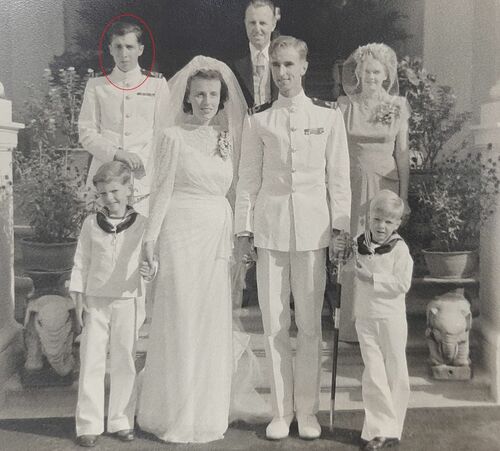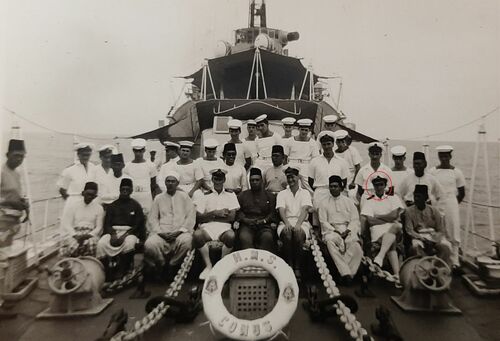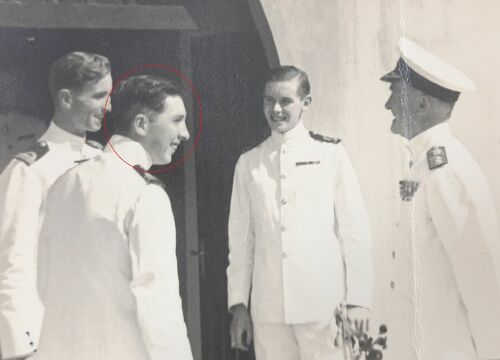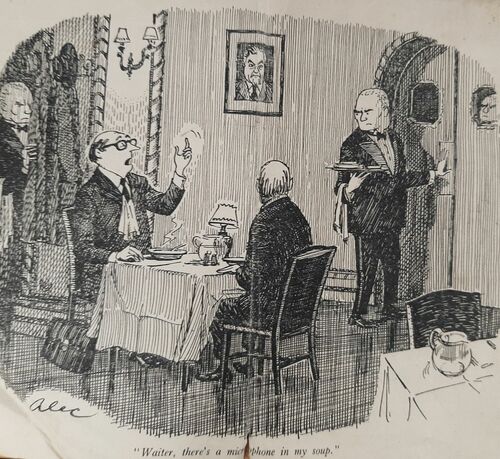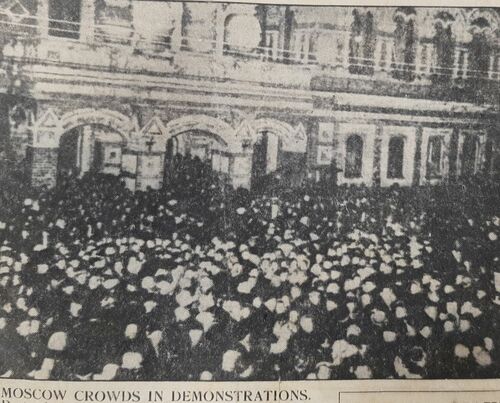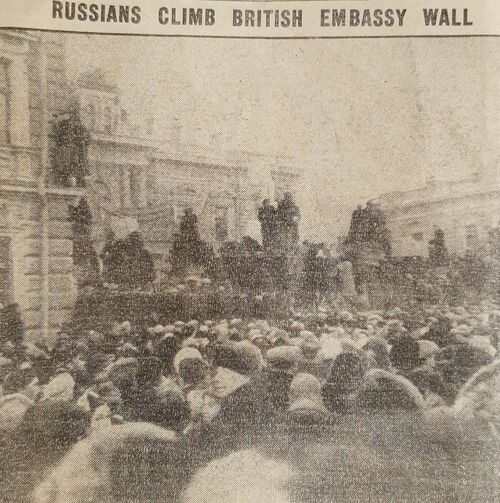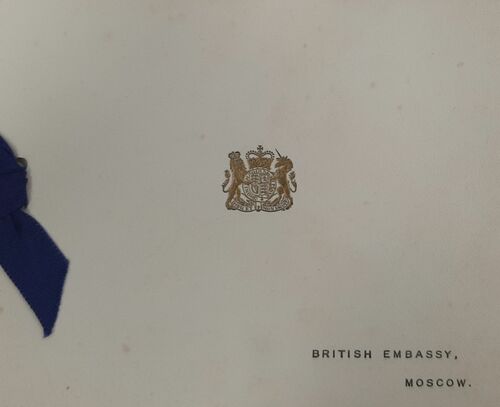Auction: 23003 - Orders, Decorations and Medals
Lot: 229
A well-documented Post-War M.B.E. group of eight to Lieutenant-Commander P. E. Rous-Moore, Royal Navy, who served with H.M.S. Comus during the Malayan Emergency and Korean War
On the Staff of the British Embassy in Moscow during the Cold War, he was present for the attack on them during the 1956 ‘John Bully’ riots
The Most Excellent Order of the British Empire, 2nd Type Member's (M.B.E.) breast Badge, Military Division, silver, with its Royal Mint case of issue; 1939-45 Star; Burma Star, clasp, Pacific; Defence and War Medals 1939-45; Naval General Service 1915-62, 1 clasp, Malaya (Lt P E Rous-Moore RN); Korea 1950-53 (Lt P E Rous-Moore RN); U.N. Korea 1950-54, mounted court-style as worn, nearly extremely fine (8)
M.B.E. London Gazette 1 January 1976.
Peter Edward Rous-Moore (also spelled Rouse-Moore) was born on 27 December 1925 and attended Bedford School, later passing his school examinations in July 1925. He soon enrolled as a Naval Cadet at H.M.S. Ashbury, a satellite of the U.S. shore base Saker on 1 May 1943. Appointed Midshipman on 1 January 1944 he was posted to the heavy cruiser Suffolk, then part of the Eastern Fleet. Early the next year Rous-Moore was transferred to the destroyer Redoubt, arriving with her at some stage before March 1945.
Already a part of the Eastern Fleet Redoubt joined the Task Force 61, assembled to prevent a Japanese force from evacuating troops from the Andaman Islands. This they did although Redoubt was unengaged at the resulting Battle of the Malacca Strait. She was later part of the escort for Operation Balsam, a carrier borne reconnaissance and air-raid on Malaya and Sumatra which proved a major success.
Rous-Moore had been serving as a Midshipman for that entire war, being commissioned Lieutenant on 1 September 1946. Posted to the destroyer Comus in January 1948 he was still with her the next year when she began patrols off the coast of Malaya. Her role here was to suppress weapon smuggling to the Communist Guerrillas in the region and she played host to several Royal Navy motor launches which launched patrols upriver to achieve this.
On the outbreak of the Korean War the next year Comus was posted to the Yellow Sea as part of the Commonwealth Blockade of the region. Here she came under attack by two North Korean Ilyushin II-10 Fighter-Bombers on 22 August 1950. The two vessels struck her astern with four bombs, managing to hole her port side and killing one seaman, wounding another. Despite the damage Comus made Kure harbour, Japan and was able to undergo repairs.
Rous-Moore was posted to the Naval Headquarters and Communications vessel, H.M.S. Ladybird on 5 October 1950. This ship was stationed at the U.S. naval base at Sasebo, Japan, from which she acted as a hub of communications for the Commonwealth Blockade. Rous-Moore was advanced Lieutenant Commander on 1 September 1954, not long after the end of the Korean War.
It was in this rank that he qualified as a Russian Interpreter in 1955 and was posted as part of the British Staff at the Moscow Embassy during the Suez Crisis in 1956. Likely as an attempt to take international eyes away from the brutal suppression of the Hungarian Revolution a mob of 1,000 young men formed outside the British Embassy to call for a withdrawal from the Suez. Chanting 'John Bully' and 'English Out' they forced their way passed the guards and invaded the embassy grounds.
'Throngs of men, women, and youngsters ran across the British Embassy forecourt and pressed their noses against the windows of doors opening on to the main entrance hall of the building.
Behind these doors, under the concentrated stares of "invaders" Sir William Hayter and the Embassy Staff discussed security precautions'
(Aberdeen Evening Express, 6 November 1946, refers)
It took three hours for reinforcements to arrive and help the guards in clearing the embassy grounds. Even then the crowd stood behind these newly arrived soldiers and continued to cheer every visitor to the embassy. Rous-Moore was present for the incident and as a Naval Officer was doubtless at the forefront of the 'security precautions' put in place in case the mob turned hostile.
Returning to the U.K. Rous-Moore was ashore at President in 1958, being posted to the Frigate Meon on 5 August 1958. He was likely still with her when she was ordered to the Gulf as part of Operation Vantage, landing British troops to support Kuwait against Iraq. Placed on the retired list on 27 December 1975, he was later re-engaged and returned to the retired list on 27 December 1983. Rous-Moore died at Cheltenham, Gloucestershire in February 2001; sold together with copied extracts from the Navy Lists and London Gazette as well as an archive of original material comprising:
i)
One Naval Officer's epaulette.
ii)
A number of photographs, many annotated to identify the recipient.
iii)
Oxford and Cambridge School Examination Board results.
iv)
9 Newspaper cuttings, largely relating to the Moscow Riots.
v)
A playbill for 'The Embassy Follies' with the recipient named as an ''Assistant Director' and his wife as an actor.
vi)
Four Christmas cards, two named to the 'British Embassy, Moscow.'
vii)
An invitation to the recipient's wedding in 1950.
Subject to 20% VAT on Buyer’s Premium. For more information please view Terms and Conditions for Buyers.
Estimate
£800 to £1,000
Starting price
£600

